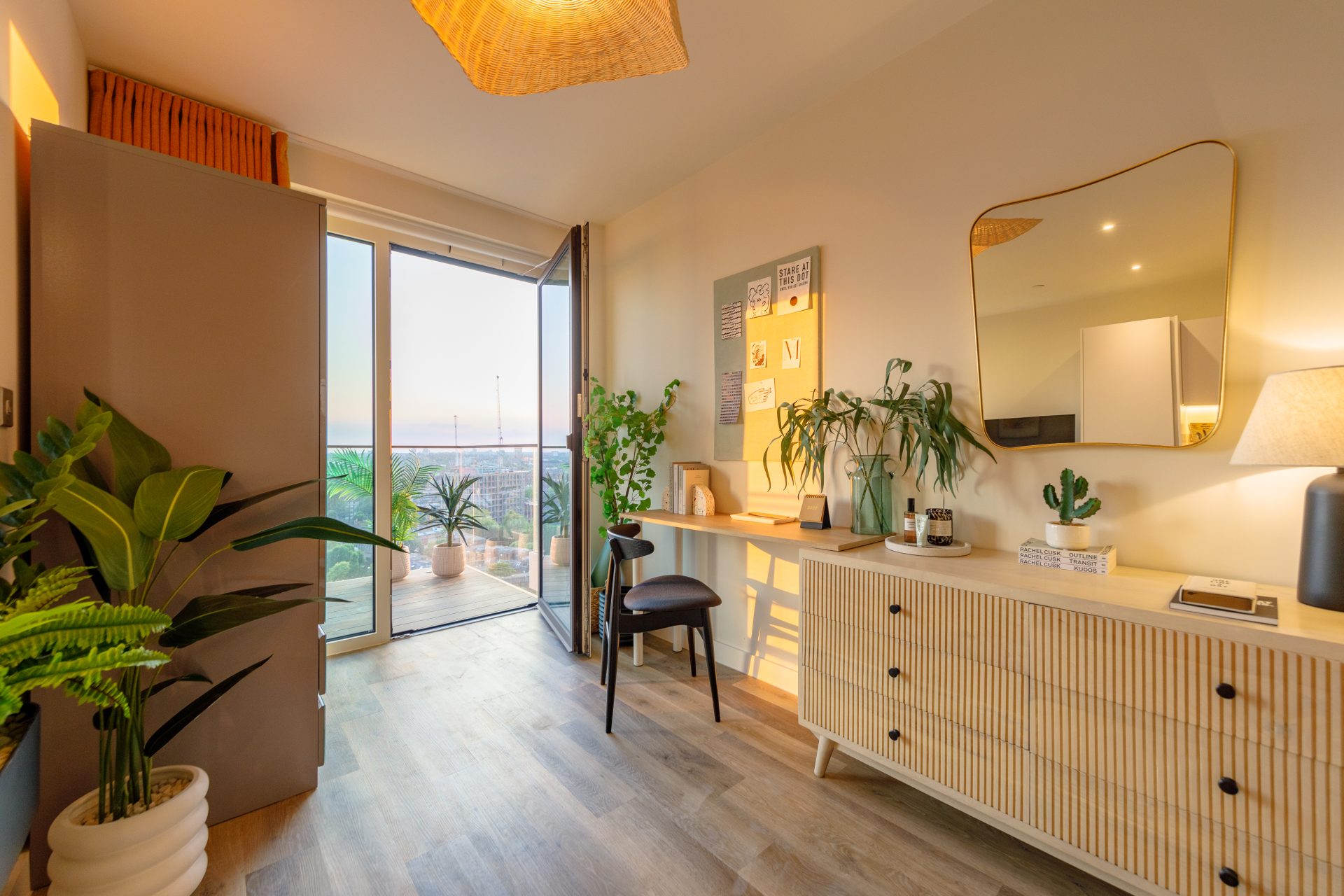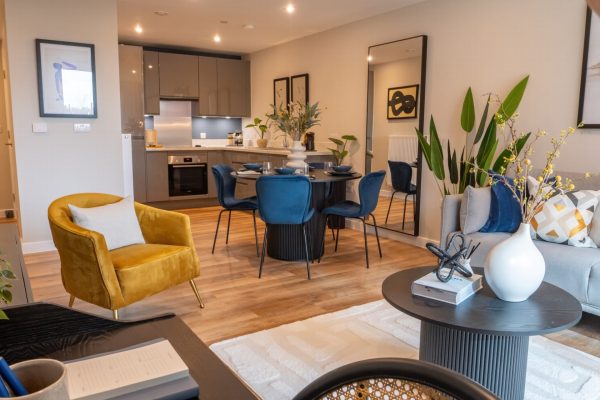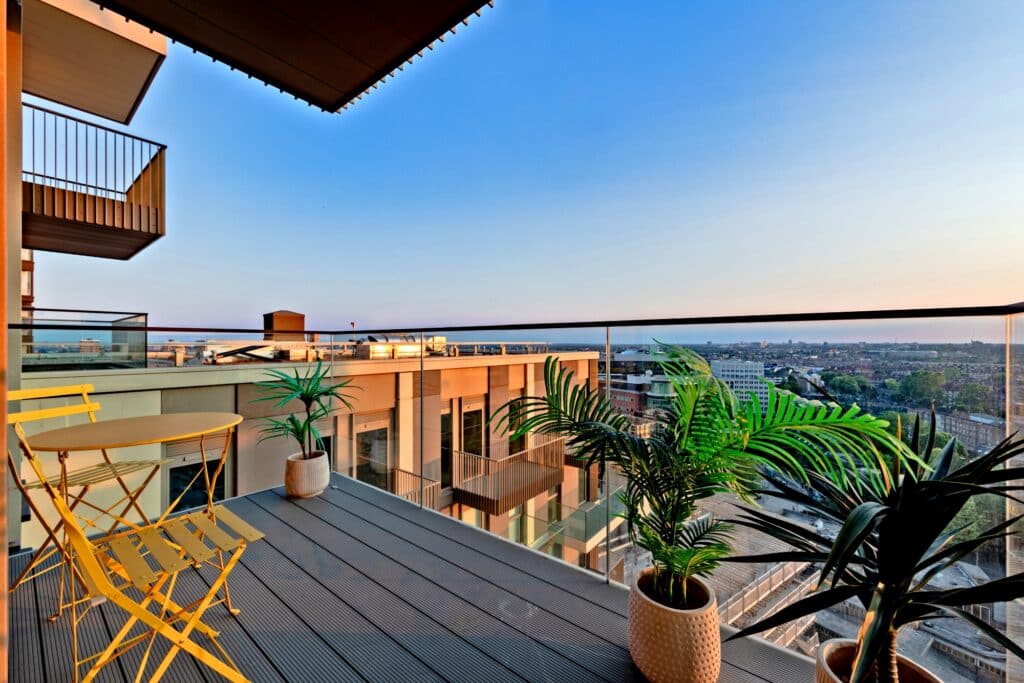
How to staircase with Shared Ownership
Once you’ve purchased shares and moved into your new Shared Ownership home, you have the option of ‘staircasing’ to increase the share you own. But how does this work, and is staircasing worth it?
How staircasing works
When you’re looking to get on the property ladder with Shared Ownership, you will initially purchase shares in a property that suits your budget and affordability at the time. Many buyers choose a share between 10% and 75%, but this figure is entirely up to you. You will pay the housing provider (LGAH) rent on the proportion of the property that you do not purchase.
If you choose to buy more shares in the property, this is known as staircasing. As you increase the percentage you own, the rent you pay to LGAH will decrease. In most cases, you can continue this process until you own 100% of your home; however, some may be restricted due to location. We recommend checking your lease.
Process for staircasing older Shared Ownership homes
If you purchased your Shared Ownership home prior to the changes introduced with the Affordable Homes Programme 2021-2026, the process of staircasing looks like this:
- You should first contact your management provider (in this case, Legal & General Affordable Homes) and give notice that you intend to staircase your Shared Ownership home. The minimum share you can staircase is 10%
- You then need to arrange an independent survey of your home. This survey must be undertaken by a RICs registered surveyor, to determine how much your property is currently worth. This valuation will then be used to provide a price for the shares you wish to purchase. Valuations are typically valid for three months
- Once the valuation has been provided, you will be asked to confirm if you wish to proceed with the staircasing transaction. You may need to provide additional documentation to your housing provider at this point
- You will need to instruct a solicitor to act for you, we recommend this is done once you have received your valuation and the cost of the share increase has been confirmed to you.
Newer process for staircasing Shared Ownership homes
If you purchase your shares after the changes to the Affordable Homes Programme 2021-2026, the process of staircasing is slightly different:
- You will still need to contact your management provider, to advise that you wish to staircase. The minimum you can staircase by is 5%
- For homes under the new model, there is also the option to staircase by 1%. The ability to increase ownership by 1% is limited to the first 15 years from the date of purchase. This still applies if you have purchased a resale property
- If you choose to staircase by 5% or more, you will be required to have a RICs valuation carried out on your property to confirm the current value and the cost of the staircase share. For 1% staircasing, a RICs valuation is not required. Instead, LGAH will calculate the cost of the 1% value. If you are not happy with the calculation, you are able to instruct your own survey; however, this would be at your own cost
- For shares of 5% or more, once you have confirmed you are happy to proceed, the process will continue as a legal transaction and you will need to instruct a solicitor to act on your behalf
- For 1% increment staircasing, this is usually done more informally, with no requirement to instruct a solicitor on your behalf. LGAH will adjust your ownership amount and any rent payment by a Memorandum
Staircasing (with the exception of 1%) usually requires a change to your mortgage and lease, so it’s worth contacting a solicitor and speaking with your mortgage provider during the process.
Is it worth staircasing?
There are a number of reasons why Shared Ownership buyers choose to staircase when living in their new homes:
- Cost savings: Your rent will decrease as you incrementally increase the number of shares that you own, saving you money in the long-term
- Valuation benefits: The more shares of your home that you own, the more you’ll benefit from property price rises when it comes time to sell
- Flexibility: If you’re able to staircase your property to 100%, you’ll be able to sell it on the open market via an estate agent straight away rather than going through the usual Shared Ownership sales process (though this can vary by development, so always check with your provider first)
- Remortgage Benefits: Once you own 100% of your home, if you choose to remortgage you will have a wider source of lenders. This is because not all lenders offer shared ownership products
Ultimately, choosing to staircase your Shared Ownership home is a personal choice based on your situation and budget. If you’re not sure whether it’s right for you, reach out to a member of our friendly team or speak to a financial advisor.

Can you staircase to 100% with Shared Ownership?
Each Shared Ownership home and development is different, so it’s recommended that you review the staircasing options before purchasing your initial share.
However, if it’s permitted, you can staircase to 100% with Shared Ownership. This transfers full ownership of the property over to you, meaning you’ll no longer have to pay rent on your home.

Do you need a deposit to staircase with Shared Ownership?
Unlike when you first purchase your shares, you don’t need a deposit to staircase with Shared Ownership. Instead, you can use the equity you’ve built up in the share you already own to apply for your new mortgage.
How does staircasing impact stamp duty?
When buying shares in a Shared Ownership home, you have two options when it comes to paying stamp duty. You can either:
- Pay for stamp duty up-front on the total cost of your home, or
- Pay for stamp duty based on the cost of your share
If you choose to pay up-front, staircasing won’t impact your stamp duty requirements at all. If you choose to pay based on the cost of your shares, however, you’ll only need to pay stamp duty once your shares exceed 80% of the home’s value.
Do you need to staircase before selling a Shared Ownership home?
You don’t need to staircase your Shared Ownership home before selling. If you don’t own 100% of the property, you’ll be selling the share that you currently own (typically to a buyer that your housing association will initially try to find).
There’s also the option of back-to-back staircasing, which is when you simultaneously staircase to 100% and sell your Shared Ownership home. This is a popular option for Shared Ownership sellers who are finding it difficult to find a buyer for a large share.
Have more questions about staircasing and Shared Ownership? Get in touch!
Staircasing your Shared Ownership property can seem like a very complex process if you’ve never considered it before. If you’re still unsure about anything, get in touch and we’ll be happy to answer any questions that you might have.

